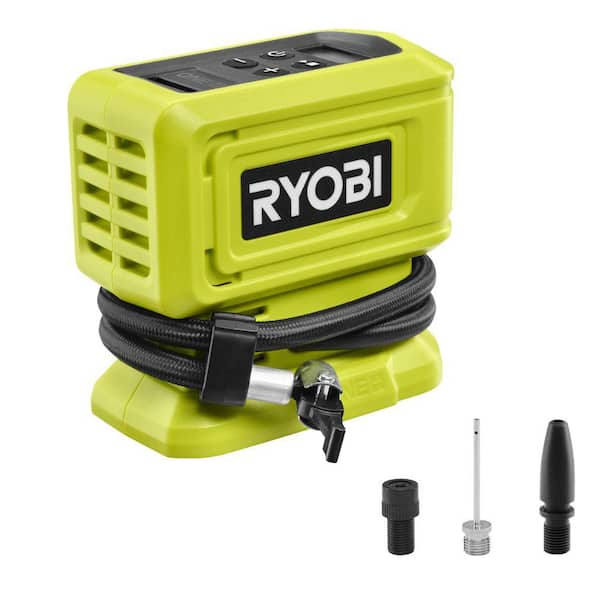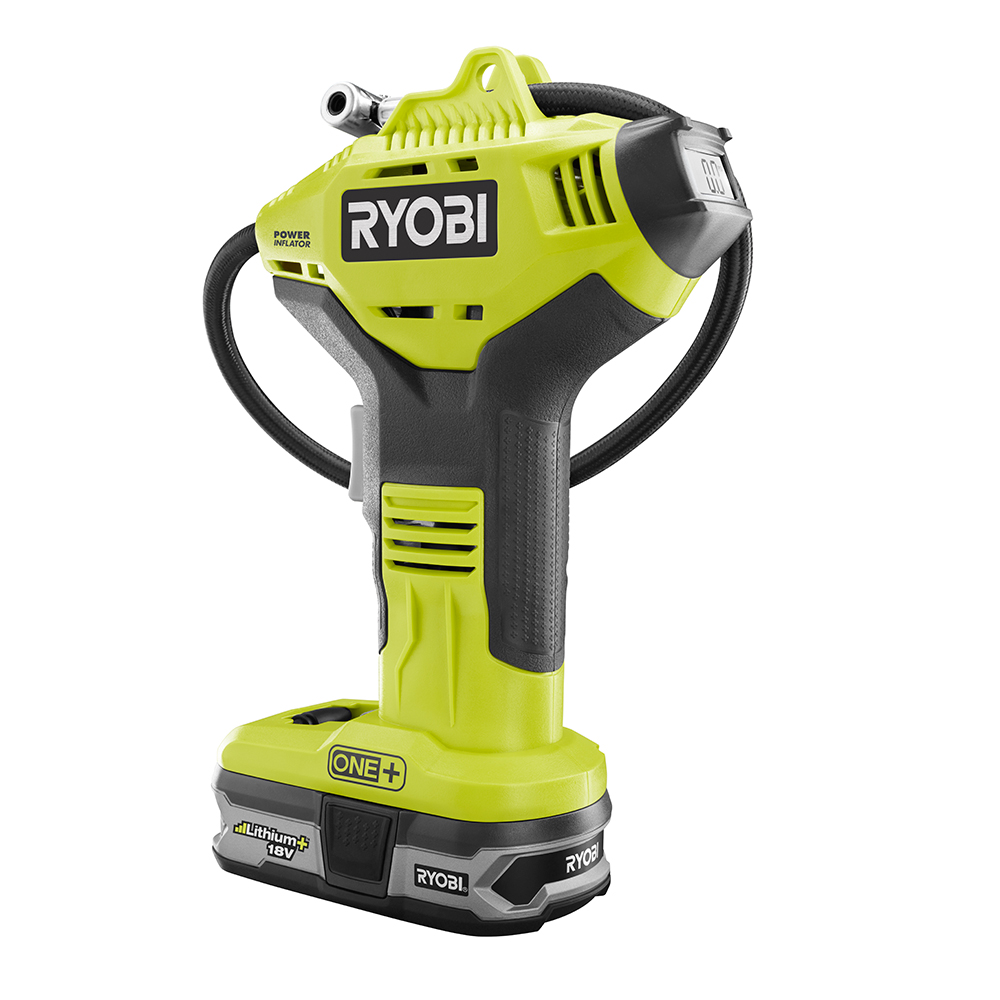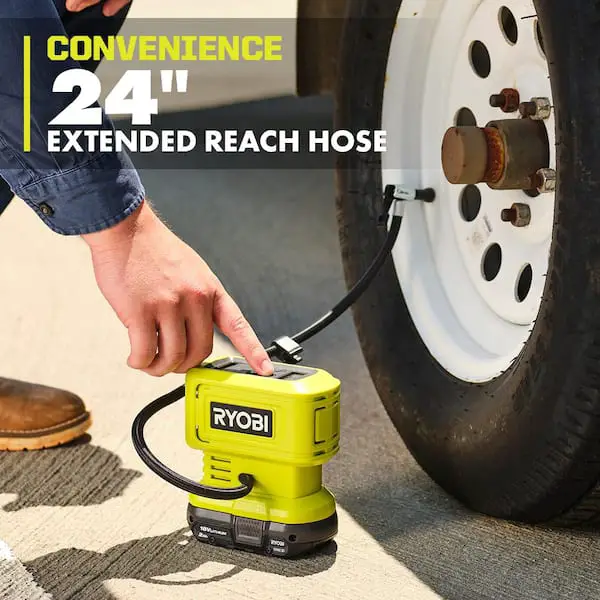Have you ever found yourself stranded with a flat tire or needed to inflate a pool toy, only to struggle with a cumbersome manual pump? The Ryobi Air Pump is your ultimate solution for these everyday inconveniences.
Imagine the peace of mind you’ll have knowing you can quickly and effortlessly handle any inflation task. This compact, yet powerful tool is designed to make your life easier, saving you time and energy. You’ll discover how to use the Ryobi Air Pump effectively, unlocking its full potential.
You’ll learn tips and tricks that ensure you get the most out of this handy device. Dive in to find out how this simple tool can become an indispensable part of your daily routine. Whether you’re a DIY enthusiast or just looking for convenience, this guide is tailored for you. Stay with us, and you’ll soon wonder how you ever managed without it.
Contents
Ryobi Air Pump Features
The Ryobi Air Pump is more than just a tool; it’s a companion for all your inflation needs. Whether you’re pumping up bike tires for a weekend adventure or inflating a pool float for a family barbecue, this pump promises efficiency and ease. Let’s dive into what makes this air pump a must-have in your toolkit.
Key Specifications
Understanding the specifications can make all the difference when you’re choosing an air pump. The Ryobi Air Pump boasts a robust 18V lithium-ion battery, ensuring you’re not tethered to a power outlet. Its compact design is perfect for storage, fitting easily in your car or garage.
Additionally, the pump delivers an impressive maximum pressure of 150 PSI. This means you can inflate car tires or sports equipment swiftly. Imagine not having to stop at a gas station just to ensure your tires are road-ready.
Unique Functions
The Ryobi Air Pump stands out with its automatic shut-off feature. Set your desired pressure, and the pump will stop when that level is reached. No more guesswork or risk of over-inflating your items.
Another interesting function is the digital pressure readout. It allows you to monitor the inflation process with precision. This feature is especially handy when dealing with delicate items that require specific pressure levels.
Have you ever been in a situation where you needed to inflate something on the go? The Ryobi Air Pump includes multiple nozzles to cater to various needs, from car tires to air mattresses. This versatility ensures you’re prepared for any situation.
Which feature do you think would be most beneficial for your needs? Share your thoughts and experiences in the comments below!

Credit: www.ryobitools.com
Getting Started
Starting your journey with the Ryobi Air Pump can be exciting. This tool offers convenience and efficiency, making it a favorite for many users. Whether inflating tires, sports equipment, or air mattresses, its versatility is unmatched. But before diving into its features, setting up properly is crucial. Let’s explore the initial steps for a seamless experience.
Unboxing The Air Pump
Unpacking the air pump reveals several components. Inside the box, you will find the air pump unit, a battery, a charger, and a set of nozzle attachments. Each piece serves a specific purpose. Ensure all components are included. Double-check the packaging for any missing parts. Inspect the unit for any visible damage. A quick glance ensures everything is intact and ready.
Safety Precautions
Safety is important when using any tool. Keep the air pump away from water to avoid electrical hazards. Always read the manual before use. Familiarize yourself with the safety guidelines. These include wearing protective gear like gloves. Ensure the workspace is clean and clutter-free. Avoid using the pump near flammable materials. Regularly inspect the battery and charger for wear. Proper handling ensures a smooth and safe operation.
Setting Up The Air Pump
Setting up your Ryobi air pump is straightforward. Follow these steps for a quick setup. You’ll be ready to inflate tires or sports equipment in no time. Ensure everything is securely connected for optimal performance.
Attaching The Hose
Start by locating the air pump’s hose. It’s usually coiled for easy storage. Unwind it completely to avoid tangling. Identify the nozzle on the pump where the hose connects. Attach the hose securely to the nozzle. Ensure a tight fit to prevent air leaks during use.
Powering The Device
Locate the power button on the air pump. It’s typically on the top or side. Make sure the pump is connected to a power source. If it’s battery-operated, check if the batteries are charged. Press the power button to turn the device on. You’ll hear the motor start, indicating it’s ready to use.
Inflating Tires
Inflating tires might seem like a straightforward task, but doing it efficiently can save you time and ensure your safety on the road. The Ryobi Air Pump is a handy tool that simplifies this process, making it accessible even for those who aren’t mechanically inclined. Whether you’re gearing up for a road trip or just want to ensure your daily commute is smooth, knowing how to use this air pump correctly can make a world of difference.
Connecting To A Tire
Start by locating the valve stem on your tire. This is where you’ll attach the Ryobi Air Pump. It’s usually covered with a small cap which you should unscrew and set aside. Be careful not to lose it!
Next, connect the nozzle of the air pump to the valve stem. Make sure it’s securely attached. A loose connection could lead to inaccurate pressure readings or even damage to the valve. It’s a simple step, but crucial for effective inflation.
Setting The Pressure
Now, it’s time to set the desired pressure. Check your vehicle’s manual or the sticker inside the driver’s door for recommended tire pressure. Using the Ryobi Air Pump’s digital display, adjust the settings to match these numbers.
Press the button to start inflating. Watch the display as the pressure increases. It’s satisfying to see the numbers climb, knowing you’re optimizing your tires for better performance and fuel efficiency.
Have you ever wondered how much impact tire pressure has on your driving experience? Correct pressure reduces wear and tear, improves mileage, and enhances safety. By keeping your tires properly inflated, you’re investing in your vehicle’s longevity and your peace of mind.
Inflating Other Objects
Easily inflate various objects using the Ryobi Air Pump. Connect the pump to your item, turn it on, and watch it inflate quickly. Ideal for inflating sports balls, pool floats, and air mattresses.
Inflating objects with the Ryobi Air Pump is not limited to just tires. This versatile tool can be your go-to solution for a variety of inflatables, from pool toys to air mattresses. Have you ever struggled with manually inflating a large pool float? The Ryobi Air Pump can save you time and effort, making it an essential tool for your household. ###Using Different Nozzles
The Ryobi Air Pump comes with a set of nozzles designed for various needs. Whether you’re inflating a beach ball or a camping mattress, there’s a nozzle for the job. Swap out the nozzle easily by simply twisting and pulling. The right nozzle ensures a snug fit, preventing air leaks. Have you ever tried inflating a football with a bike pump? It’s frustrating without the right nozzle. With Ryobi, you get the perfect fit every time. ###Adjusting For Various Items
Not all objects require the same pressure. Adjusting the air pump settings is crucial to avoid overinflation. With Ryobi, you can control the pressure to suit what you’re inflating. Check the item’s recommended PSI (pounds per square inch) and adjust accordingly. Ever experienced an air mattress that deflates overnight? Ensuring the correct pressure can prevent such mishaps. The Ryobi Air Pump offers convenience and efficiency, making it a valuable tool for inflating a range of objects. Next time you’re preparing for a beach day or setting up camp, consider how this tool can simplify your tasks. What other items could you inflate effortlessly with the right tools?
Credit: www.homedepot.com
Maintenance Tips
Proper maintenance of your Ryobi air pump ensures long-lasting performance. Regular care keeps your equipment functioning smoothly. This section provides practical tips to maintain your air pump effectively.
Cleaning The Air Pump
Dust and debris can clog your air pump. Regular cleaning is essential. Use a soft cloth to wipe the exterior. Avoid using water directly on the pump. A damp cloth works best for stubborn dirt.
Inspect the air filter frequently. A clogged filter reduces efficiency. Replace it if necessary. Keep the nozzle clean for optimal airflow. Check for dirt and blockages regularly.
Storing Properly
Proper storage extends the life of your air pump. Store it in a dry, cool place. Avoid direct sunlight or damp areas. Ensure the pump is turned off before storing.
Keep the air hose coiled neatly. Prevent kinks and tangles. Remove any attachments for safe storage. Store them separately to avoid damage.
Cover the pump to protect it from dust. Use a cloth cover or plastic bag. This simple step prevents unnecessary wear and tear.
Troubleshooting Common Issues
Using a Ryobi air pump can simplify many tasks. But sometimes, issues may arise. Understanding common problems and solutions can save time and effort. Regular maintenance and proper handling can prevent most issues. Learn how to troubleshoot low pressure and overheating problems.
Low Pressure Problems
Low pressure can affect performance. First, check the air hose for leaks. A loose connection can cause pressure loss. Ensure all fittings are tight. Examine the air filter. A clogged filter can restrict airflow. Clean or replace it as needed. Inspect the pump’s seals. Damaged seals may need replacement. Using the correct nozzle is crucial. An improper nozzle can lead to inefficiency. Always use the right attachments for the task.
Overheating Solutions
Overheating can damage the pump. Ensure proper ventilation during use. Avoid using in hot environments. Check the motor for obstructions. Remove any debris that may block airflow. Allow the pump to cool if it gets too hot. Do not cover the pump while in use. This can trap heat and cause overheating. Regularly check the power source. Ensure the voltage matches the pump’s requirements. Incorrect voltage can lead to overheating issues.

Credit: espanol.ryobitools.com
Frequently Asked Questions
How Do You Start A Ryobi Air Pump?
To start a Ryobi air pump, first connect it to a power source. Attach the nozzle to the item you wish to inflate. Turn on the power switch. Adjust settings if necessary. Monitor the pressure gauge to ensure desired inflation level.
Always follow the manufacturer’s instructions for safe use.
Can Ryobi Air Pump Inflate Car Tires?
Yes, Ryobi air pumps can inflate car tires efficiently. Ensure the pump’s pressure rating matches your tire’s requirements. Attach the nozzle securely to the tire valve. Monitor the pressure gauge closely. Inflate the tire to the recommended PSI. Ryobi air pumps are portable and convenient for this task.
What Is The Maximum Psi For Ryobi Air Pump?
The maximum PSI for a Ryobi air pump typically ranges from 100 to 150 PSI. This capacity is sufficient for inflating car tires, bicycles, and sports equipment. Always check the specific model’s manual for exact details. Never exceed the recommended PSI to ensure safety and equipment longevity.
How Do You Maintain A Ryobi Air Pump?
To maintain a Ryobi air pump, regularly clean its exterior and nozzle. Check the power cord and connections for damage. Store it in a dry, dust-free area. Periodically inspect the pressure gauge for accuracy. Refer to the user manual for specific maintenance guidelines to ensure optimal performance.
Conclusion
Using a Ryobi air pump is simple and convenient. Follow the steps shared earlier. Ensure the pump is charged and ready. Connect it securely to the valve. Monitor the pressure carefully. Stop inflating once the desired level is achieved. Store the pump in a safe, dry place.
Regular maintenance extends its lifespan. Check the user manual for specific instructions. Safety is important, so handle it with care. The Ryobi air pump is a reliable tool for many tasks. Enjoy the ease of inflating with this handy gadget.

